Tutankhamun - The Boy King
In my previous post , we got a glimpse of Egypt's earliest Necropolis' and gave you a rundown of the who's who on the Valley of the Kings. With over 60 tombs discovered in the Valley of the Kings in Luxor, let's take a closer look to the most famous tomb in the entire valley, the tomb of the Boy King, Tutankhamun.
Quite often referred to as the Boy King because of his early death or the Golden King because of the riches discovered in his tomb, Tutankhamun is perhaps one of the most famous Pharaohs of Egypt.
Ready?

Life of King Tut and His 9-year Reign
More commonly known as King Tut, Tutankhamun was the son of the revolutionary Pharaoh Akhenaten, who tried to introduce monotheism to his people by only worshipping Aten, the god of the sun. The changes he attempted to implement were not well-received and his successors would spend years attempting to undo everything he had accomplished, going so far as to eradicating all evidence of his existence.
Tutankhamun was nine years old when he became Pharaoh and immediately began to reinstate polytheism, first by changing his name from Tutankhaten, meaning “Living Image of Aten”, to the name by which he is currently known, meaning “Living Image of Amun”, a more traditional Egyptian god. As he was so young when he became Pharaoh, Tutankhamun was believed to have been strongly advised and counseled by his vizier, Ay, who later became his successor. His wife, Ankhesenamen, was also the biological daughter of Akhenaten, incest being common in the royal family to ensure the purity of the royal bloodline.
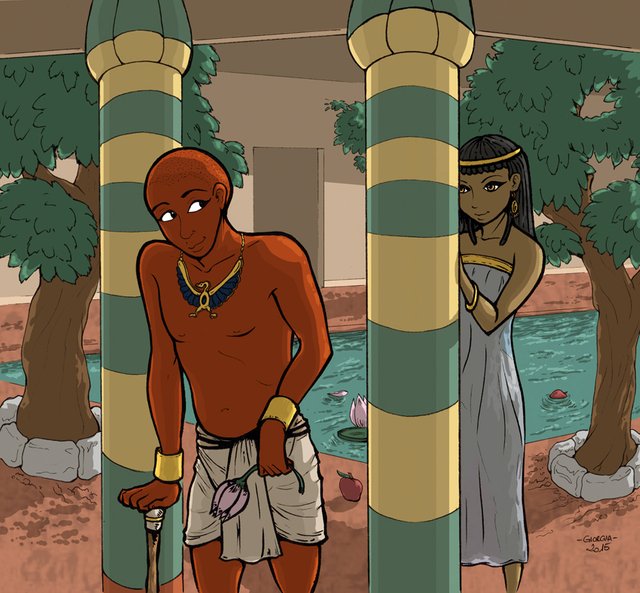
Despite his efforts to reestablish polytheism, Tutankhamun was unable to accomplish his goal; he died at the age of 18 or 19 and was too young to finish what he had started.
Tutankhamun's Death
The Egyptian royal bloodline was rife with incestuous relations, most likely to keep the bloodline pure. Tutankhamun was no different; genetic testing done in 2010 proved that Tutankhamun’s parents were full-blooded brother and sister. This could have culminated in a myriad of health problems for Tutankhamun.
Studies of Tutankhamen’s mummy show that the boy-king was extremely fragile; he was born with a clubfoot which required a walking cane, had a cleft palette, and suffered from malaria which would have drastically reduced healing time.
What eventually killed Tutankhamun was quite likely a fall of some sort which created a leg fracture; malaria would have slowed the healing considerably and likely created a prime opportunity for infection. Tutankhamun was buried in the Valley of the Kings, his funeral being presided over by Ay, who went on to claim the throne and marry Ankhesenamen in Tutankhamun’s absence.
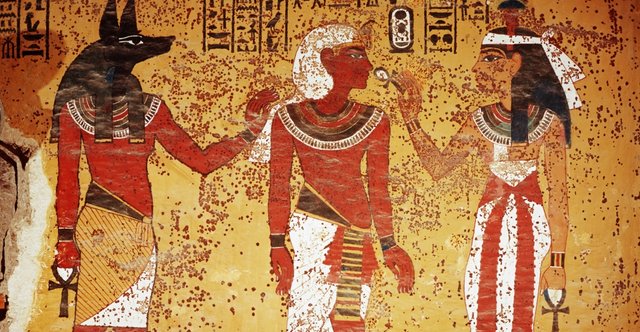
Discovery of the Tomb of Tutankhamun
Due to the fact that the Boy King died so young and unexpectedly, his royal tomb was unfinished. As such, the tomb in which he was actually buried was likely meant for someone else, perhaps Ay. In addition, his relationship with Akhenaten led him to be erased from history just as his father had been; when he was succeeded by Ay and later by Horemheb, Tutankhamun’s name was removed from historical documentation and his monuments were restructured to resemble the two subsequent Pharaohs.
Eventually, the location of his tomb was forgotten and the entrance built over, resulting in a tomb that was almost completely intact when it was eventually discovered.
In 1914, in his desire to discover the tomb of Tutankhamun, an English aristocrat named Lord Carnarvon began financing the excavations in Egypt of archaeologist Howard Carter. Although the excavation team took a break during World War I, work quickly resumed in 1917, with little success. Finally, in 1922, Lord Carnarvon impatiently informed Carter that he intended to stop financing the expedition at the end of that season.
Luckily for the Egyptologist, that was the year when he finally discovered the Pharaoh’s final resting place.
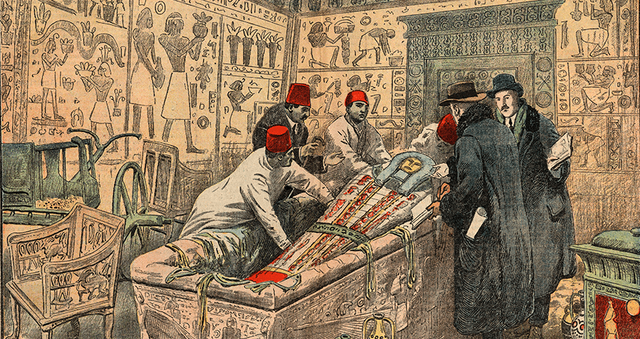
The Royal Tomb
The entire tomb of Tutankhamun consisted of four chambers: an antechamber, an annex, a treasury room and the burial chamber. There was evidence that the tomb had been robbed, but since there were also signs that it had been quickly restored, it was believed that the robbery occurred shortly after the Pharaoh’s burial.
Among the many treasures that were discovered in the tomb were furnishings believed to belong to the Pharaoh himself, a model of a boat that Egyptians expected to become life-sized and functional in the afterlife, a board game popular in that era called Senet, numerous unguent jars, and shabtis. Shabtis are funerary figurines representing servants of the Pharaoh; when it came a time in the afterlife for the Pharaoh to perform manual labor, the shabtis would act as his or her substitute.
One of the boxes found intact in the tomb held two foetus coffins, perhaps belonging to the daughters of Tutankhamun.

In the burial chamber, four large gilded wooden boxes were placed one inside another to resemble chambers of the royal tombs. Inside the smallest box was the sarcophagus of Tutankhamun with three coffins inside, once again with one inside another.
The mummy of the Pharaoh was found within the smallest, with all the finery fit for royalty, including gold finger and toe coverings, as well as a pair of golden sandals pressed to look like they were made of wooden reeds. Gold was commonly found in royal tombs because it was believed to be the skin of the gods.
The excavation team would need ten years to catalog the treasures discovered in the entire tomb. Ironically, even though the chambers had remained untouched for centuries and were beautifully preserved when discovered, it wasn’t the elements or thieves who would prove to be the greatest sources of destruction.
Although grave robbers never made it into the burial chamber to defile the mummy, Carter's team detached the mummy’s arms and legs and cut the torso in half in order to recover the jewels and amulets from the body. The head of the mummy was also severed in order to remove Tutankhamun’s royal golden mask.
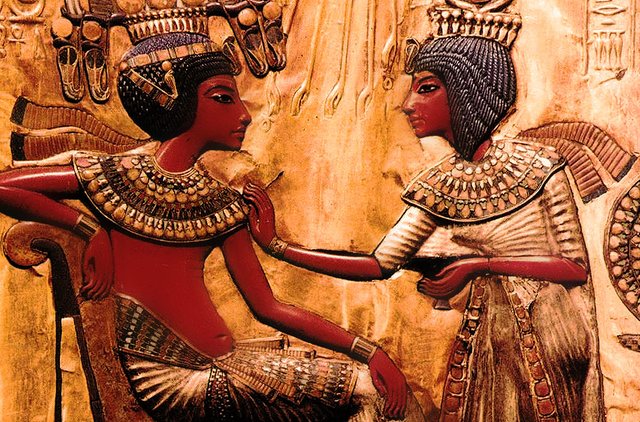
Tutankhamun's Contested Lineage
The scholastic world was shocked by the discovery of a cache of mummies in the Valley of the Kings in 1907. Two mummies which have yet to be conclusively identified, KV55 (male) and KV35YL (female) have been genetically proven to be Tutankhamun’s parents. This is quite intriguing because KV55 and KV35YL have also been genetically proven to be full-blooded brother and sister.
Assuming that Akhenaten is mummy KV55, which is widely believed, it is unlikely that Kiya or Nefertiti was, in fact, mummy KV35YL, unless historical reports are wrong regarding their ancestral lineage. Neither Kiya nor Nefertiti was believed to be daughters of Amenhotep III and Queen Tiye, parents of Akhenaten and grandparents of Tutankhamun, giving rise to various theories on the identity of Tutankhamun’s birth mother. Amunhotep III and Queen Tiye, whose mummies were both conclusively identified in the Valley of the Kings, were found to be Tutankhamun’s grandparents through genetic testing.
There is a movement of people who believe that mummy KV55 is in fact that of Smenkhkare, a Pharoah who ruled briefly between Akhenaten and Tutankhamun. The identity of Smenkhkare has been rife with speculation, with some scholars believing Smenkhkare to in fact be Nefertiti, who assumed a new name as co-regent to her husband’s crown. Others believe Smenkhkare to be the full-blooded brother of Akhenaten, son of Amunhotep III and Queen Tiye. While scholars can attest to the identity of KV55 with some accuracy (most believe it to be Akhenaten), the identity of KV35YL (Tutankhamun’s mother) is not as clear.
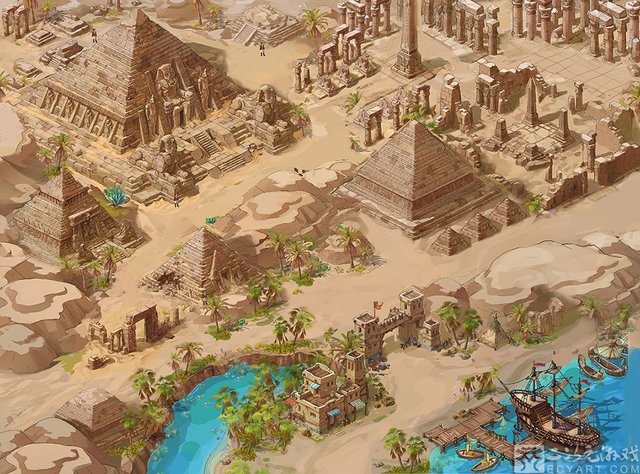
A Pharaoh of the 18th dynasty, Tutankhamun had the misfortune of ruling during a period of great upheaval, but this was perhaps a blessing in disguise, for it was his short and uneventful reign that contributed to the legend he has become. Although his actual reign was unexceptional, his renown today would more than makeup for his near obscurity in the centuries following his death.
Tutankhamun’s short reign did not make a definitive impression on Egyptian history, yet people remain fascinated by him, due mainly in part to his tomb which was found largely intact, a monument to the beauty of ancient Egypt. Scholars hope to find conclusive answers on Tutankhamun’s lineage as further investigation is conducted.
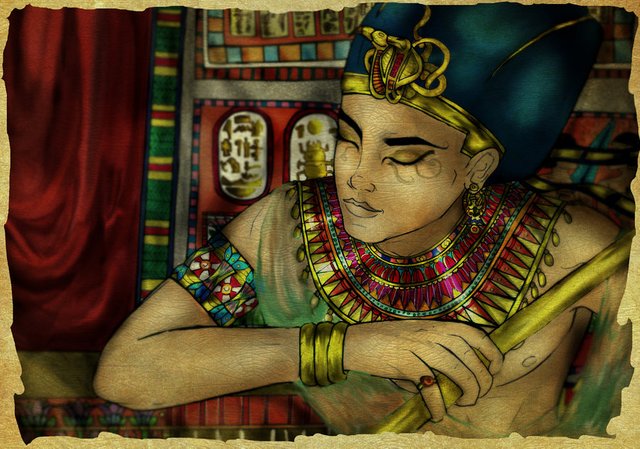
If you find Egyptian history fascinating as much as I do, you may check some of my posts for further reading.
- Valley of the Kings - Graveyard of the Pharaohs
- The Great Sphinx of Giza
- The Tyrant and The Great Pyramid Builder - Khufu
- The Pyramids of Egypt
- The First Female Pharaoh of Egypt - Hatshepsut
Source(s):
Wikipedia - Tutankhamun
Tour Egypt - King Tut
History - Tutankhamen
Biography - King Tut Biography
Art Gallery of Ontario - Tutankhamun
Facts and Details - KING TUTANKHAMUN
Image Credits: 1 2 3 4 5 6 7 8
I find history fascinating
there seems to be a problem with the timeline of pharaoh . Is that true . did they move dates of rule for some . I've heard conflicting stories
Indeed it is fascinating. With regards to the dates, I guess they did not or there will be a long debate over it
Hello @wdoutjah, I wanted to let you know I enjoyed your history post and also that I am featuring you and your content in a the following contest.
Pay It Forward Contest. I hope you do not mind, but you do have some pretty cool history content along with a nice mix of other stuff.
I dont know if I am deserving but please feel free @bashadow. Thank you
Thanks, I don't do these kinds of post to well, but I had to try for the contest. Thanks for understanding.
I used to enkoy learning about king tut i never went over anything about him in 2010 and i graduated by 2011 never knew king tut got robbed at that time guess some guys seen that stuff was quite valuable
Though anything about ancient Egypt is interesting, his story is a stand out. Maybe robbers had hard times stealing stuff inside the tomb thats why they never succeeded :D
Lol yeah if they didn't die in the traps
hahahaha yeah, if they pass thru them :D
lol what kind of traps they discovered in there
Congratulations! This post has been upvoted from the communal account, @minnowsupport, by Horus from the Minnow Support Project. It's a witness project run by aggroed, ausbitbank, teamsteem, theprophet0, someguy123, neoxian, followbtcnews, and netuoso. The goal is to help Steemit grow by supporting Minnows. Please find us at the Peace, Abundance, and Liberty Network (PALnet) Discord Channel. It's a completely public and open space to all members of the Steemit community who voluntarily choose to be there.
If you would like to delegate to the Minnow Support Project you can do so by clicking on the following links: 50SP, 100SP, 250SP, 500SP, 1000SP, 5000SP.
Be sure to leave at least 50SP undelegated on your account.